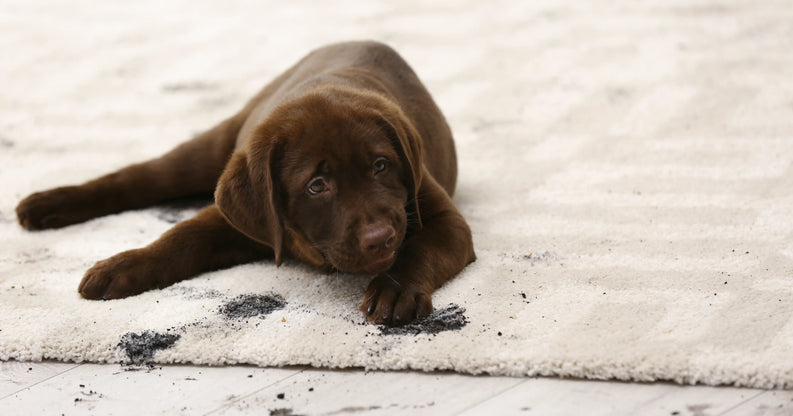Are you debating whether your hallway could benefit from a runner rug? The answer is almost certainly yes! Hallways often feel stark or uninviting, but a well-chosen hallway runner rug can instantly transform this space, adding warmth, style, and personality. Not only does it make your hallway feel more welcoming, but it also protects your floors from the daily wear and tear of heavy foot traffic.
A hallway runner can add a cozy touch underfoot and complete the look of your home. In this guide, we'll show you how to measure your hallway for the perfect rug size, explain the key functions of a runner, and offer tips on selecting the right style for your space.
The Most Common Purposes of a Runner

- Protecting your floors: Hallways are high-traffic areas, which makes them susceptible to damage. A runner rug serves as a protective layer, shielding your floors from scratches, scuffs, and other wear and tear. Whether your flooring is hardwood, tile, or laminate, a runner can help maintain its beauty for years to come.
- Enhancing your home’s aesthetic: A runner rug can be a subtle yet powerful design element that ties together the look of your home. Introducing color, pattern, and texture creates visual continuity between rooms and enhances the overall ambiance of your hallway.
- Increasing safety: In homes with children, pets, or elderly residents, safety is paramount. Runner rugs offer a slip-resistant surface, reducing the risk of falls and making your home safer for everyone.
Measuring for the Ideal Hallway Runner Rug
To achieve a polished and functional look, getting the right measurements for your hallway runner is crucial. Follow these steps to ensure you select the perfect rug size:
Measure Your Hallway Dimensions

Before selecting a hallway runner rug, the first step is to measure your space accurately. Begin by using a tape measure to determine the full length and width of your hallway. Make sure to measure along the floor, taking into account any irregularities or unique features like doorways, staircases, or bends in the hallway that could affect the placement of your runner.
It’s crucial to note these features, as they might influence not only the size of the rug runner you choose but also its positioning within the hallway. Accurate measurements ensure that your runner will fit well and enhance the look of your space rather than overcrowding it.
How Long Should the Hallway Runner Be: Determine the Ideal Rug Length
When selecting a hallway runner, getting the length right is crucial for both aesthetics and functionality. Ideally, you want to leave a few inches of exposed flooring at both ends of the hallway to create a balanced and visually pleasing look. A good rule of thumb is to allow about 6 inches of space at each end, though this can be adjusted depending on your hallway’s specific dimensions.
For most hallways, runner lengths typically range between 6 to 12 feet. However, if you have a particularly long hallway, you might want to consider custom-length runners that can stretch up to 20 feet or more. If your hallway’s length doesn’t neatly match standard runner sizes, and you’re not opting for a custom runner, it’s usually better to size down to the next available length rather than overcrowding the space.
For exceptionally long hallways, you also have the option to use either one continuous runner or multiple runners placed with small gaps in between. This choice largely depends on your personal style preference and how you envision the overall flow of your space. A continuous runner provides a seamless, uninterrupted look, while multiple runners can create distinct sections or visual breaks in an extra-long hallway.
Choosing the Right Width for Your Runner

The width of your hallway runner is just as important as its length. Typically, hallway runners are between 2 and 3 feet wide, but the ideal width depends on the specific dimensions of your hallway. A well-proportioned runner should cover most of the hallway’s width while still leaving some floor exposed on either side.
Aim to leave around 4 to 6 inches of visible floor space on each side of the runner. This border not only creates a balanced and aesthetically pleasing look but also ensures that the runner doesn’t overwhelm the space. It’s important that the runner sits comfortably in the hallway without making it feel cramped or too narrow.
Additionally, make sure that the width of the runner doesn’t obstruct any doorways or impede access to other features, such as closets or furniture. A runner that is too wide can interfere with the functionality of your hallway, while a too-narrow runner might look out of place or ineffective.
Hallway Runner Style Options
Runner Rug Pattern and Design
When it comes to the pattern and design of your hallway runner, consider the overall style of your home. Traditional patterns like Persian or Oriental designs add a touch of elegance and timeless appeal to your hallway.
On the other hand, contemporary patterns featuring geometric shapes or abstract designs provide a modern and stylish look. For those who want to make a bold statement, choose a runner with vibrant colors and intricate patterns. If you prefer a more subtle approach, a simple, monochromatic design that complements your existing decor may be the best choice.
Rug Material and Texture

The material of your hallway runner is another critical factor, especially since hallways are high-traffic areas. Durable materials like polypropylene or nylon are excellent choices because they are resilient and easy to maintain.
These synthetic fibers are designed to withstand heavy use and are also stain-resistant, making them ideal for busy households. For a more luxurious feel, wool runners offer a soft and plush texture, though they do require more upkeep. If practicality is your priority, flatweave runners provide a low-profile option that’s easy to clean and fits well under doors.
Hallway Runner Color Scheme
The color of your runner should align with the overall color palette of your home. If your hallway already features vibrant colors, a neutral runner can create a balanced and cohesive look. Conversely, if your space is more muted, a runner with bold colors can serve as an eye-catching focal point.
Consider how the runner’s color will interact with adjacent rooms — choosing a color that either blends in seamlessly or provides a striking contrast can enhance the visual flow of your home.
Now It's Time to Choose the Perfect Hallway Runner
Armed with all the essential information, you’re now ready to select the perfect hallway runner for your home. With a vast range of materials, colors, and patterns available, choosing the right rug is an exciting opportunity to add character and warmth to your hallway. Take your time to explore different options, as the right runner can significantly impact both the look and feel of your space.
The perfect runner will not only complement your decor but also add warmth, comfort, and style, transforming your hallway into a welcoming part of your home. If you need any assistance in choosing the perfect rug for you, get in touch with our GLN Rugs team right now!



